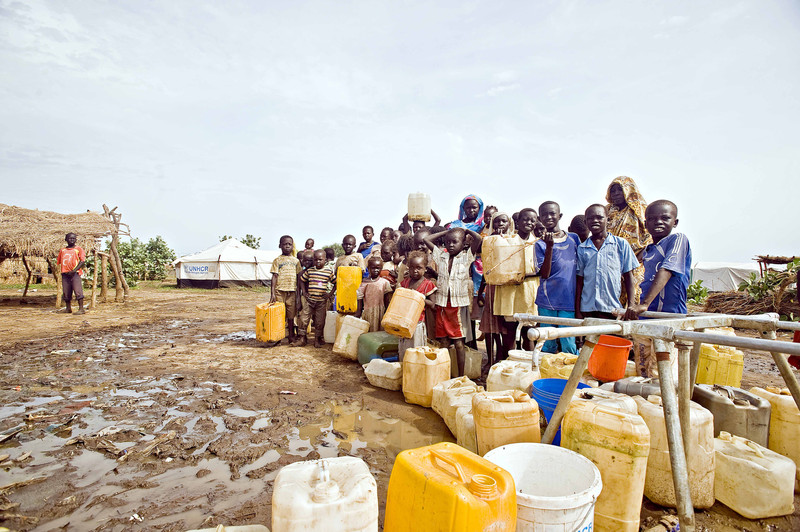Using analysis to inform funding priorities in complex crisis settings

There are many sources of information that funders can draw from to inform their analyses and decisions around which crises responses to fund. US Agency for International Development produces Complex Emergency Factsheets. UN Office for the Coordination of Humanitarian Affairs provides a wealth of information on www.humanitarianresponse.info. There’s also Fund for Peace’s Fragile States Index, and ACAPS, which provides multisectoral analysis, with a number of indices and a focus on severity of needs and trends. There are many others, such as the global hunger index and global health systems rankings.
These data sources can help funders compare crises to decide where to support, create an understanding of the kind of needs the affected populations have, and help them think about scenarios and what may happen next. Share on X
How CDP conducts analysis to inform funding priorities – COVID-19 Fund
How did we decide where to focus our funding priorities for the CDP COVID-19 Response Fund when there is so much global need? We know that COVID-19 has compounded existing vulnerabilities, amplified needs and exacerbated existing problems, such as inadequate access to health care, food insecurity, protection and economic deprivation, particularly in fragile and complex humanitarian settings. We embarked on our analytical quest with this in mind.
First, we started with a list of the 25 highest severity countries on the ACAPS Severity Index, which we chose as the primary weighted index for CDP to understand the complexity and severity of humanitarian need and conditions around the globe.
Next, we compared the ACAPS top 25 most severe with the 25 countries with the lowest rankings on the Fragile States Index (another good indicator of complexity, risk, needs and vulnerability).
Further, we compared these lists with the list of countries with the lowest-ranked health care systems in the world (and where COVID-19 cases are least likely to be prevented, treated or addressed).
Finally, we compared these lists with the list of countries with the least vaccinated populations.
Using this focused and considered risk-based approach, we narrowed this list down by selecting the countries that appeared on every list (reducing it from 25 to 16 countries). This left us with a list of the countries we believe have the greatest humanitarian needs, have the greatest current and future disaster risk (from Conflict, COVID-19 and Climate – the 3 Cs), have the poorest and most vulnerable populations, are most susceptible to COVID infection and are least able to access quality health care.
Countries identified for funding from CDP’s COVID-19 Fund in 2022
|
|
|
|
Themes identified for funding from CDP’s COVID-19 Fund in 2022
Given the intention to focus this year’s funding on reaching the most vulnerable populations suffering the compounding risk and impacts of the pandemic, we narrowed the thematic focus to the most pressing needs emerging, largely, from our analysis above. That led us to prioritize the following themes for 2022:
- Multiple health impacts of COVID-19: This is especially urgent for countries with weak health systems and low vaccination rates.
- Loss of livelihoods and food insecurity: Complex and fragile countries are suffering most acutely from the negative secondary economic impacts of the pandemic. Of the 16 countries, 13 are considered hunger hotspots by the UN World Food Programme for February-May 2022. Rising prices have reduced household purchasing power, exacerbating pandemic-related income losses. Despite some improvements compared to 2020, the World Bank estimated that 97 million more people were living in poverty in 2021 compared to 2019, due to the repercussions of the COVID-19 pandemic. The US Global Leadership Coalition estimated that 660 million people worldwide may face hunger in 2030, 30 million more people than if the pandemic had not occurred.
- Early childhood education and development: In countries affected by emergencies, only one in three children is enrolled in preprimary education, according to UNICEF. Due to the COVID-19 pandemic, even fewer children are accessing pre-school, as programs close. Parents are concerned about the health and safety of their children, placing them at risk of missing out on critical early learning opportunities.
- Building resilience: Recognizing that the pandemic is unlikely to end anytime soon, it is important to focus on building resilience to future shocks, including COVID-19. Recognizing this, we decided that disaster risk reduction and climate change adaptation activities can be mainstreamed or included in program sector activities under a “build back better” approach. We are also considering standalone projects where it meets fund criteria and purpose.
This is just one example of using the myriad of data and indices available to decide which complex humanitarian emergency setting and which sectors to focus on as a funder. While this data is specific to COVID-19 programming priorities, CDP uses different methodologies and data sets for different funds and relies on our own in-house expertise to interpret and make decisions based on our analyses.
With so many to choose from, how are you going to use the many data sources available to inform your own philanthropic giving?
